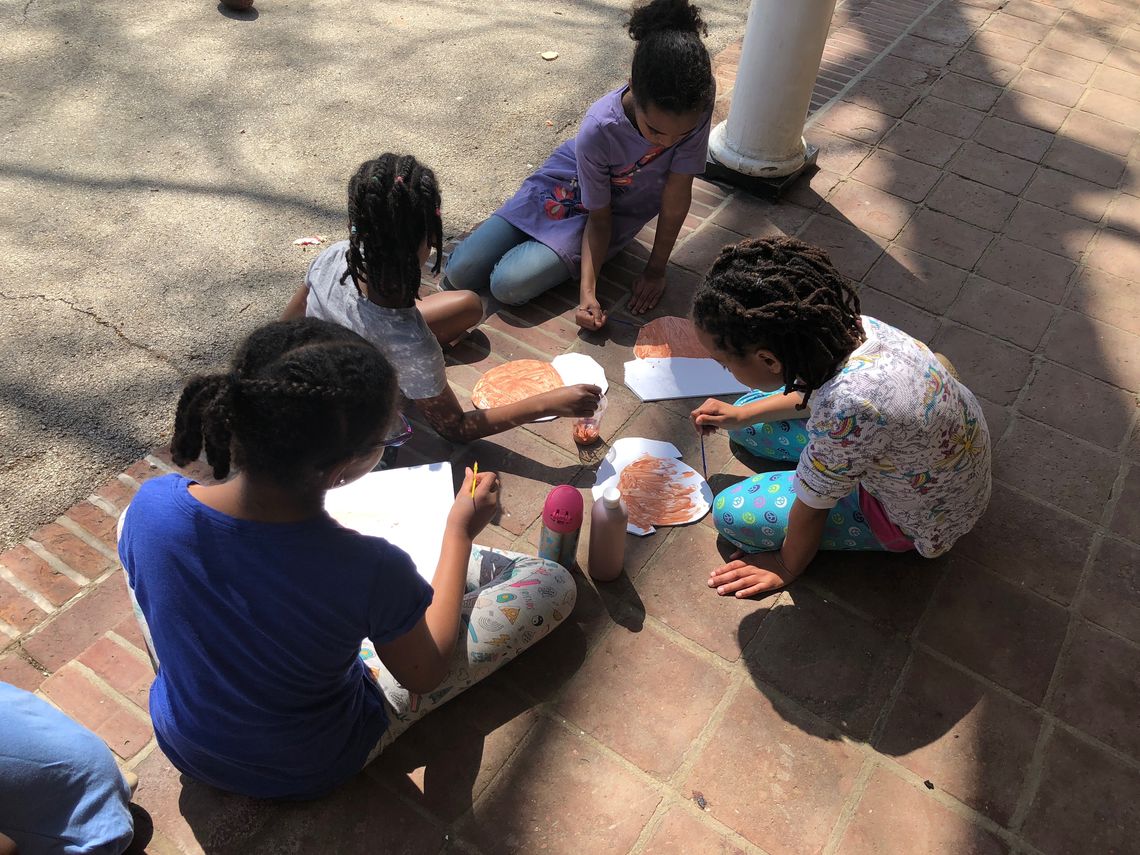- Home /
- News /
- 37th Annual Mold Symposium /
- Dreaming In Color
May 07, 2018
Monday
Dreaming In Color
In early February, Dean of Lower School Erica Snowden launched a new group for Pre-Kindergarten-4th Grade girls of color called Dreaming in Color. These young students meet monthly to talk about topics around race, ethnicity, and diversity in order to build positive racial identities. Split into two groups (Pre-Kindergarten-1st and 2nd-4th Grade students), children have found positive images in magazines to create scrapbooks and discussed how to advocate for themselves in uncomfortable situations. This month the group will look at positive women of color and then finish the year by talking about natural beauty and hair textures. We sat down with Erica to talk about Dreaming in Color and why this work is so important for young women of color.
What is Dreaming in Color?
ES: Dreaming in Color is a group that is about building positive racial identity, self-esteem, and empowerment. Specifically, we are looking at ways to find ourselves in media, through a collage search that we do each time we meet. We are also looking at ourselves in other forms of media, such as actual picture books, advertisements in magazines, videos, and other ways that would uplift and empower people of color, but specifically girls of color. We’re thinking about all of the ways we are different and yet special at the same time. We acknowledge those differences, but acknowledge them in ways that are positive, uplifting, heartwarming, and at the same time normalized.
Why Is Dreaming In Color
Important at GSFS?
ES: It’s never too early to talk about racial identity and being proud of who
you are, generally. I think that in today’s society we don’t do enough to make
sure that all people feel empowered, see positive representations of
themselves, and so you have to be intentional in creating those opportunities.
For me, I wanted to be more intentional with hopes, thoughts, and dreams that
this kind of work will eventually just become a part of the fabric of who we
are as a school. This work really ties into our Quaker values that there’s a
Light in everyone and so we’re just shining a light on people who haven’t
always had the light shined on them or might have had their lights dimmed.
How Does Dreaming In Color Interact with the Rest of Our Racial Identity Curriculum?
ES: Dreaming In Color is starting the conversation earlier on, so that when students get to Middle School and they’re trying to figure out what their identity is, it’s not the first time they’ve heard these terms. When they take the ERBS in 3rd Grade and have to fill in the bubble on the form, it’s not the first time they’ve considered their racial identity. I also hope that they think about one of the first times they thought about their racial identity in a positive light. Unfortunately, when I think about my racial identity, some of my first memories are not always positive. I hope we can find ways for students to remember the first time they considered their identity and say, “Wow! I was reading this book and I saw someone who looks like me.” or, “I remember looking at a Sesame Street video about loving your hair and that’s when I realized that these curls on top of my head are amazing.” or, “I sat next to my friend and we talked about our different skin complexions and how all of us are the same inside, but our outsides are different and that makes us special.”
As the Mother of a Young Black Woman, What Have Been Important Principles for You to Instill In Her?
ES: Definitely a strong sense of self, acknowledgment of history and where she’s come from, forward thinking about enhancing her future while embracing, cultivating, and building upon that sense of racial identity and what it means. A phrase that I often wrap it up in is “Black Magic”, realizing that it is there for her. If it’s brown magic, it is magical. Yellow magic is magical and I would say white magic too, because all of us, no matter your racial identity, there’s something magical about you.
What’s Been Student or Parent Feedback?
ES: The kids ask me every day if we’re going to meet! Parents have been so helpful bringing in snacks, asking how they might support what we’re doing, wanting to give directly to this venture, or just saying thank you. Most of all, it’s just really nice to see all of those girls in a room together, smiling, happy, and saying, “This is special. I am special.”


